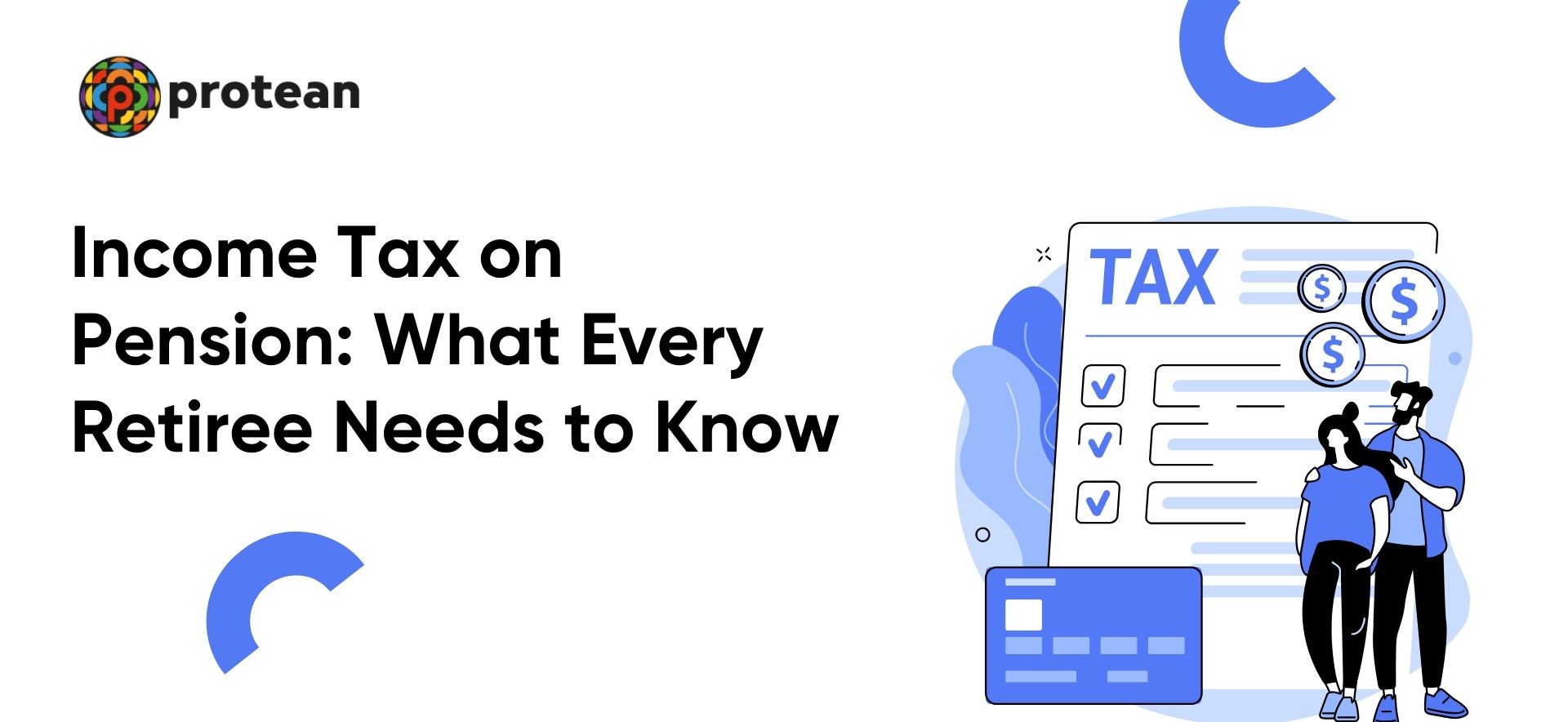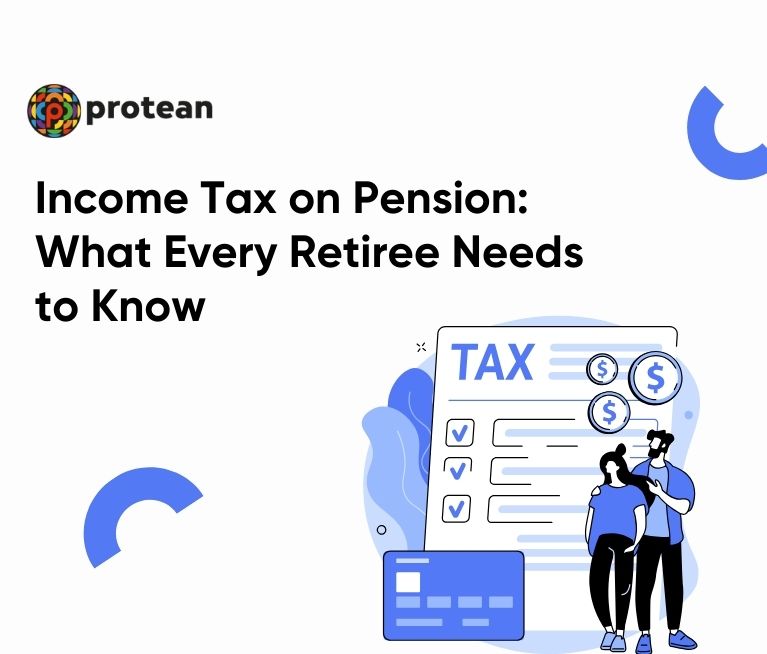Retirement is a significant phase in life when a person stops working full-time and starts depending on their savings and pension. Many retirees rely on their pension as a primary source of income. However, understanding how pensions are taxed is important to managing finances properly. Many people do not realise that pension income is generally taxable, just like a salary. Tax on pension is deducted as per the income tax laws in India, and knowing the rules can help retirees plan their expenses better.
One of the key things retirees should remember is their PAN (Permanent Account Number). It plays a vital role in tax deductions and ensures that tax is deducted at the correct rate. Without PAN, retirees may face a higher tax deduction on their pension. Additionally, understanding the various deductions available can help pensioners reduce their overall tax burden. This article explains how a pension is taxed, the role of a PAN card and steps to ensure proper tax compliance on pension.
Is Pension Taxable in India?
Yes, pensions are taxable under the Income Tax Act. However, the taxation depends on whether they are commuted or uncommuted.
1. Tax on Commuted Pension
- For government employees, the entire commuted pension is usually tax-free.
- For private employees, part of the commuted pension is tax-free, and the remaining amount is taxable. The tax-free portion depends on whether the employee receives gratuity.
- If gratuity is received: One-third of the total pension that is commuted is tax-free.
- If gratuity is not received: Half of the total pension that is commuted is tax-free.
2. Tax on Uncommuted Pension
An uncommuted pension is fully taxable as income, just like a salary. It is added to the retiree’s income and taxed according to the applicable income tax on pension slab rates.
| Also Read: Apply for PAN Card Online |
Role of PAN Card in Pension Taxation
1. Importance of PAN for Tax Deduction on Pension
Permanent Account Number (PAN) is crucial for pensioners to ensure proper Tax Deducted at Source (TDS). If the pension amount is taxable, banks or employers will deduct TDS. If pensioners do not furnish their PAN card, the tax could be cut at the maximum rate of 20% instead of their actual tax liability as per slab rates. Furnishing PAN helps deduct TDS precisely as per the applicable tax rates.
2. Filing Tax Returns Using PAN
Even after the TDS deduction on pension income, filing Income Tax Returns (ITR) is mandatory for pensioners. ITRs must be filed using one's PAN within the due date. This allows pensioners to reconcile the TDS already deducted and claim refunds if excess tax was deducted. ITR also ensures all income and taxes are correctly accounted for before the Income Tax Department.
3. PAN-Aadhaar Linking for Smooth Processing of Tax Filings
The government now makes it obligatory to link Aadhar with PAN. This linkage helps easy verification and faster processing of tax returns. Pensioners should ensure their PAN is linked to Aadhaar as per the prescribed procedures. Otherwise, their tax filings may face processing issues or even rejection, leading to complications.
Deductions and Exemptions for Pensioners
1. Standard Deduction
Pensioners get a standard deduction of ₹50,000 per year. This deduction helps reduce the taxable income.
2. Deductions Under Section 80C
Pensioners can claim deductions under Section 80C for investments like PPF, NSC, and Tax-saving Fixed Deposits (up to ₹1.5 lakh per year).
3. Section 80D: Medical Insurance Deduction
Pensioners can claim medical insurance premium deductions:
- Up to ₹25,000 per year (below 60 years).
- Up to ₹50,000 per year (above 60 years).
4. Section 80TTB: Interest on Savings Account
Senior citizens can claim up to ₹50,000 deduction on interest earned from savings accounts and fixed deposits.
5. Section 10(14): Transport Allowance Exemption
Some pensioners, especially disabled pensioners, get exemptions on transport allowance under Section 10(14).
| Also Read: PAN Card Benefits |
Steps to Ensure Proper Tax Compliance on Pension
1. Updating PAN Details
Pensioners must furnish their Permanent Account Number (PAN) to banks to enable accurate Tax Deducted at Source (TDS). Otherwise, tax could get deducted at the peak rate of 20% instead of actual tax liability as per slabs. Linking PAN with pension accounts is vital.
2. Timely Filing of Tax Returns
Despite TDS deductions, pensioners should file Income Tax Returns (ITR) before July 31st deadline. This allows pensioners to reconcile taxes already deducted and claim refunds if excess tax was cut. Filing ITR also ensures income and taxes are correctly stated to the IT Department.
3. Correct Reporting of Pension Income
In the ITR, the pension should be shown under the 'Salary' head. If a commuted pension is received, the tax-exempt portion should be correctly reported. Uncommuted pension forms part of the total taxable income for the year.
4. Using Tax Saving Deductions
Pensioners should claim deductions under Sections 80C, 80D and 80TTB to lower taxable income. They can invest in these sections wisely to save tax.
5. Regularly Checking Tax Deducted
Pensioners must check Form 26AS to verify tax deducted from their pension by their bank or employer. Annual Information Statement (AIS) also helps pensioners track pension payouts and TDS details.
Conclusion
Pension income is usually taxable, so retirees must understand income tax rules. Proper planning ensures financial stability after retirement. Having an updated PAN is critical for the right TDS deductions and smooth ITR filing. Pensioners should use tax deductions like Section 80C to reduce their tax burden. Keeping PAN details current, filing tax returns on time, and utilising tax-saving investments assist retirees in managing finances.
Staying updated on tax laws helps pensioners avoid unnecessary taxes and make better money decisions. Consulting a tax expert can maximise tax benefits if needed. Overall, tax planning is vital for retirees living on pensions for financial security. Being informed, compliant, and proactive reduces tax troubles later. Retirees should seek assistance to comprehend taxation on pension income and responsibly file returns. This facilitates efficient long-term planning.
| Also Read: Beginners Tax Guide |
Written by Bruhadeeswaran R.
Bruhadeeswaran R. is a B2B content expert with 14+ years of experience, specializing in National Pension System (NPS), PAN, DPI, eSignPro, and Central KYC. As Editor and Lead Content Writer at Protean eGov Technologies, he simplifies complex e-governance topics through engaging blogs, reports, and digital content.

